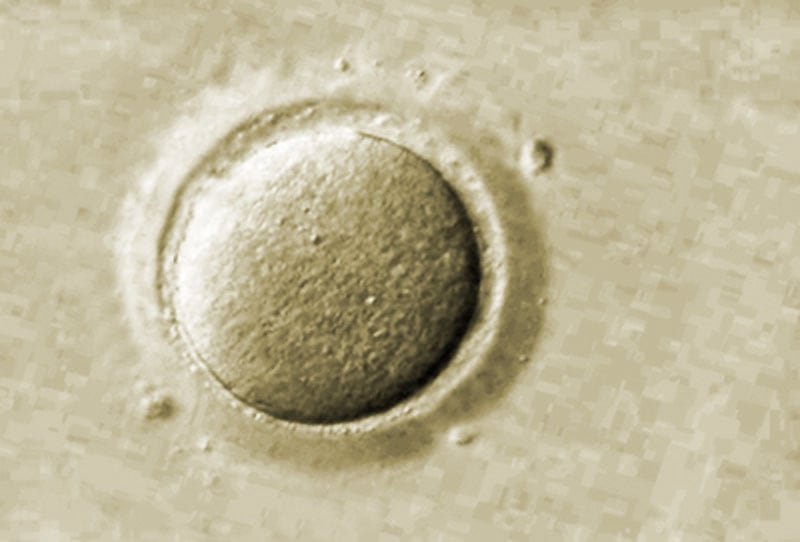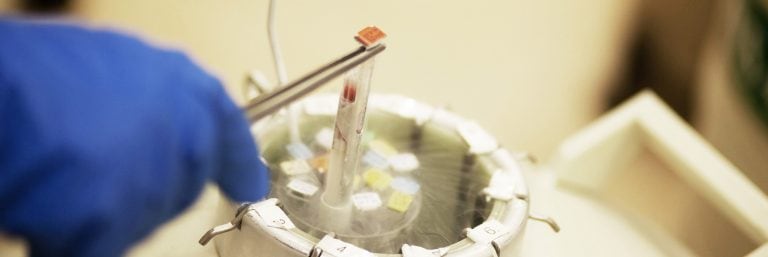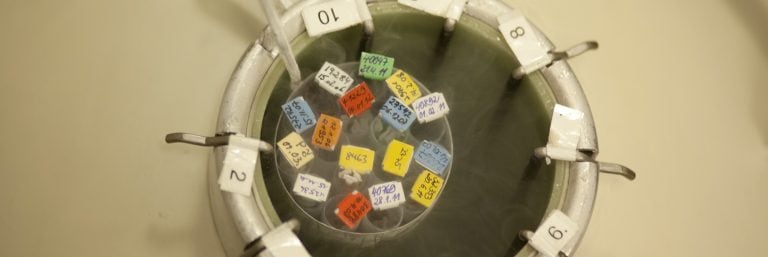Vitrification
Vitrification, so-called “ultra-rapid freezing”
Vitrification has been increasingly used in the field of human medicine for about ten years. This is an ultra-fast freezing process.
Vitrification is a procedure in which the intracellular water is removed from the cells by adding certain solutions. This prevents the formation of cell-destroying ice crystals. Mechanical damage to the cellular components is hardly to be expected.
However, due to the relatively high concentration of cryoprotectants (antifreeze agents), there is in principle a cytotoxic risk.
A major advantage of the method is the “thawing rate” of up to 98% and the fact that vitrification can be used to freeze preserve not only fertilised oocytes but also unfertilised oocytes and embryos with almost no risk.
The huge advantage of vitrification is that, for example, unfertilised eggs from women who are about to undergo a chemotherapy or radiotherapy that could endanger their fertility can be preserved (fertility reserve). Oocytes from women (between 25 and 35 years of age) who wish to create a fertility reserve for the purpose of improving their chances of pregnancy at a later stage in life (40-45 (?)) can also be treated in this way (so-called social freezing).
Embryo freezing is used, especially in countries where embryo selection is permitted, if there are more embryos in the blastocyst stage on the 5th day of culture than should be transferred.
The disadvantage of the method for the performing laboratory is that only individual cells (and not groups of oocytes) can be vitrified at any one time. In addition, the application of this method requires a longer “learning curve” and significantly more finesse than is required for slow freezing.


